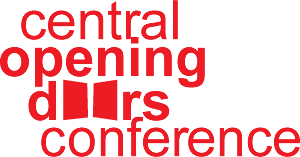2019 Presentations
PANEL DISCUSSION: ENHANCING COMMUNITY-BASED HIV TESTING
It is estimated that over 31,200 people are living with HIV in Ontario. 21% of them are undiagnosed and unaware that they are currently living with HIV. With statistics this high it makes sense that improving access to and ease of HIV testing is an important element of HIV treatment and prevention strategies in Ontario. Getting tested for HIV can be a barrier for various reasons including fear, accessibility to testing services, stigma, and discrimination. In particular, when marginalized and vulnerable priority populations* access mainstream spaces (e.g., MD/NP offices, hospitals, sexual health clinics) and services, they often feel uncomfortable and judged for their intersecting identities and what is often considered by healthcare providers as “high-risk” behaviours. Community-based HIV testing creates low-barrier, confidential, non-judgmental, and inclusive access to HIV testing. In this session, the presenters will review three models of community-based HIV testing and best current practices for creating low barrier access to HIV testing for marginalized and vulnerable priority populations including: Self-testing, Community Outreach and Peer Model, and Community-based Wraparound Testing and Service Model. Group discussions on enhancing community-based HIV testing for the different priority populations will follow.
* Not all individuals in Ontario are equally at risk of HIV infection. The Ontario HIV/AIDS Strategy recognizes six populations in Ontario most affected by HIV. Most people living with HIV in Ontario are part of one or more of these populations, and most new infections occur to individuals from the communities. A range of social drivers, as well as biological and behavioral factors lead to increased risk of HIV infection within these communities. The priority populations include: people living with HIV, people who use drugs, men who have sex with men (MSM), at-risk women, Indigenous communities, and African, Caribbean and Black (ACB) communities.
Learning Objectives
Understanding importance of low-barrier access to HIV testing.
Exploring best practices for Community-based HIV testing to reach undiagnosed individuals and connecting them to care.
presenters
Dr. Sean B. Rourke, Natasha Tutt, Stephanie Stylianou
WORKSHOP SESSION: HIV PREVENTION ACCESS (PREP/PEP)
HIV Pre-Exposure Prophylaxis (PrEP) is a highly effective option for preventing HIV infection through the daily use of antiviral medications. Evidence of the impact expanded PrEP delivery has played in dramatically reducing new HIV infections in other jurisdictions has emphasized the need for greater PrEP access in Ontario. People who could benefit from PrEP face several barriers to accessing it including understanding their own risk for HIV, limited knowledge of PrEP, difficulty finding a doctor who will prescribe PrEP and trouble navigating healthcare services and drug coverage. In this presentation, Dr. Kevin Woodward will review best practices for delivering PrEP and ways for social service workers and healthcare providers to support people they work with to learn about and access PrEP. This presentation will also identify opportunities for ongoing learning and support through the Ontario HIV Treatment Network.
Learning Objectives
Provide an overview of PrEP and its role in ongoing efforts to control the HIV epidemic
Explore best practices for engaging clients about PrEP and connecting them to care
Review opportunities for ongoing learning for patients and service providers about PrEP
PRESENTERS
Dr. Kevin Woodward
WORKSHOP SESSION: IMMIGRANTS, REFUGEES & NON-STATUS PHAS: cOMPLEX CHALLENGES & INNOVATIVE STRATEGIES
The session will discuss Current Immigration & Refugee Policies affecting newcomer PHAs as well as the impact of neoliberalism, globalization, urbanization and public health policies on health outcomes of immigrants, refugee and non-status PHAs in Ontario as well as some of the critical challenges affecting Immigrants, Refugee, and Non-status PHAs (IRN-PHAs). Discussion of how current improvements in treatment, New prevention technologies, improved and increased access to HIV testing and treatment impact the health outcomes IRN-PHAs. We will explore Strategies & Resources to support IRN-PHAs.
